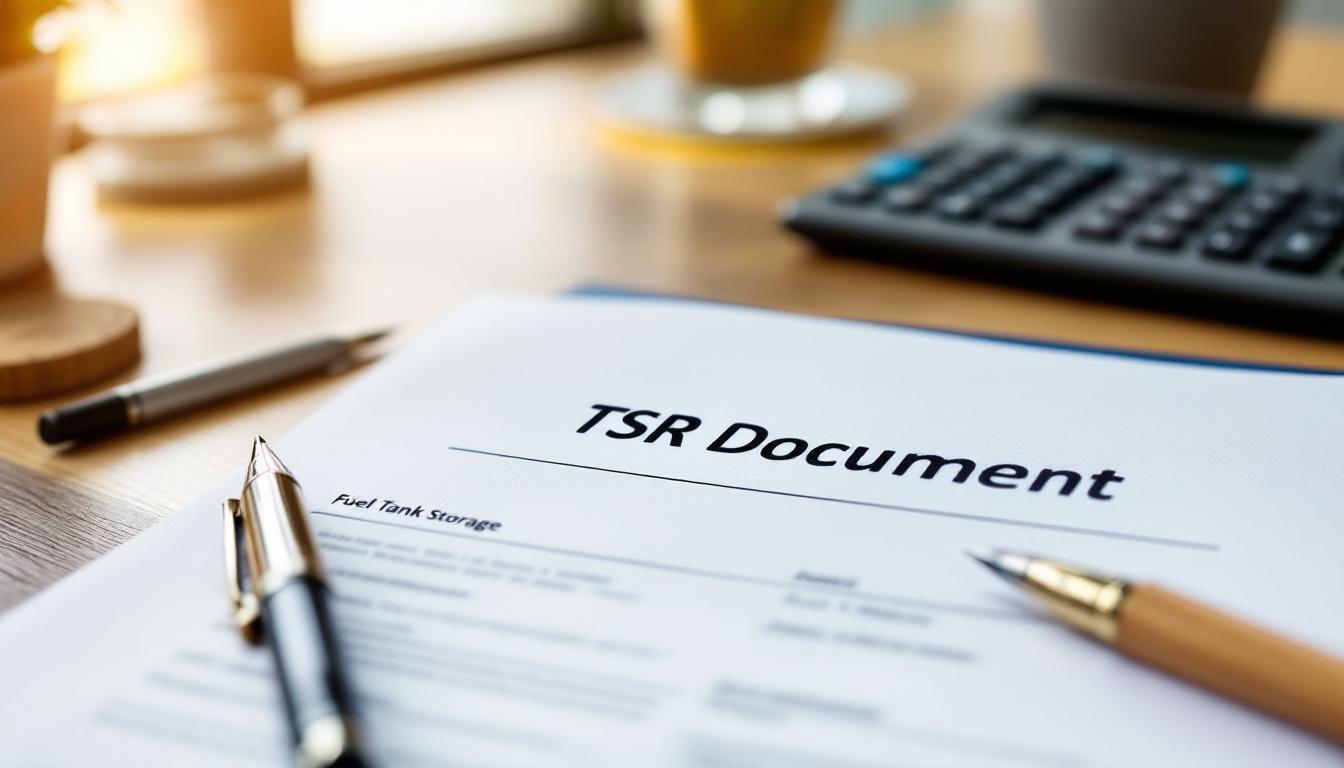
TSR Document
At GLOBAL TERMINAL NETHERLANDS B.V, we understand the critical role of documentation in managing complex projects. Technical Service Request (TSR) documents are essential tools for streamlining operations and enhancing communication with clients.
In this post, we’ll explore the importance of TSRs, from their creation to implementation, including their relevance in fuel tank storage receipt processes. We’ll provide practical insights to help you leverage these documents for improved project outcomes and client satisfaction.
What Are TSR Documents?
Defining TSR Documents
Technical Service Request (TSR) documents identify data codes authorized for use in the preparation and submission of Telecommunications Service Requests (TSRs) and Telecommunications Services. In the fuel storage industry, a TSR might address issues such as tank maintenance, safety upgrades, or capacity expansion projects.
Key Components of Effective TSRs
An effective TSR includes several crucial elements:
- Problem Identification: The TSR clearly states the issue at hand. For example, it might highlight the need to upgrade a fuel storage tank’s monitoring system in a specific facility.
- Proposed Solutions: The document outlines detailed solutions, such as the installation of new sensors and implementation of advanced software.
- Resource Estimation: It provides comprehensive estimates of resources, timelines, and costs, offering a complete project overview.
TSRs in Project Management
TSRs play a pivotal role in project management and client communication. They act as a central reference point for all stakeholders, ensuring alignment on project goals, scope, and expectations. For instance, when a company undertakes a major safety protocol upgrade across multiple facilities (e.g., in Houston and Singapore), TSRs help coordinate efforts and keep clients informed of progress and potential operational impacts.
Enhancing Client Communication
Well-crafted TSRs significantly improve client communication. They provide transparency about project details, timelines, and potential challenges. This transparency builds trust and allows for proactive problem-solving. Clear TSRs often lead to smoother project executions and higher client satisfaction rates, particularly in complex projects like integrating new real-time monitoring systems across multiple ports.
Industry Applications
In the fuel storage and logistics sector, TSRs find wide application. They help manage various aspects of operations, from routine maintenance to large-scale upgrades. For example, a TSR might detail the process of implementing a new automated inventory management system across multiple storage facilities. This document would outline the technical requirements, integration steps, and potential challenges, providing a roadmap for successful implementation.
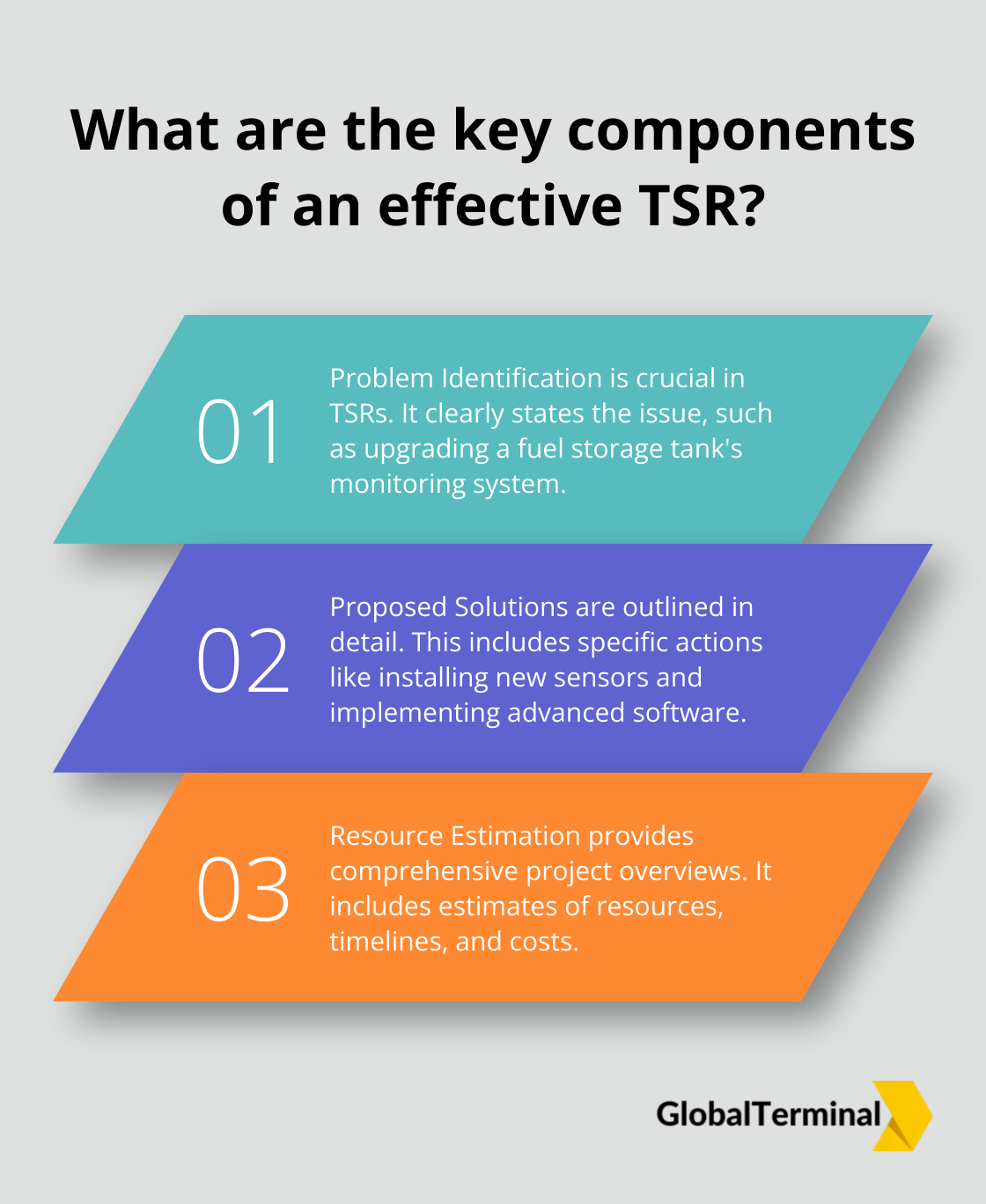
As we move forward, we’ll explore the process of creating an effective TSR document, a skill that can significantly enhance project management and client relations in the fuel storage industry.
How to Create a Powerful TSR Document
Pinpoint the Problem
The first step in creating an effective Technical Service Request (TSR) document is to identify the issue with precision. Avoid vague statements and focus on specifics. For example, instead of mentioning “tank performance issues,” specify “recurring pressure fluctuations in Tank A3 at our Rotterdam facility.” This level of detail allows technicians and managers to quickly understand the situation and its potential impact on operations.
Outline Comprehensive Solutions
After defining the problem, propose detailed solutions. Don’t limit yourself to general suggestions like “upgrading equipment.” Instead, provide a step-by-step action plan. For instance: “Install new pressure sensors on Tank A3, implement real-time monitoring software, and conduct staff training on the new system.” This approach ensures all stakeholders comprehend the proposed course of action.
Provide Accurate Estimates
Realistic resource estimation plays a vital role in project success. Break down your estimates into categories:
- Time: Offer a detailed timeline with milestones (e.g., “Sensor installation: 2 days; Software setup: 3 days; Staff training: 1 day”).
- Cost: Present a comprehensive budget breakdown. Include equipment costs, labor, potential downtime expenses, and a contingency fund.
- Personnel: Specify the number and type of staff required (e.g., “2 certified technicians for installation, 1 IT specialist for software integration, 1 trainer for staff education”).
Include Technical Specifications
Detailed technical specifications form the backbone of any TSR. They should cover:
- Equipment requirements: List all necessary hardware and software, including model numbers and compatibility information.
- Performance parameters: Specify expected outcomes (e.g., “New system should maintain tank pressure within ±0.5 PSI of set point”).
- Safety considerations: Outline all relevant safety protocols and standards that must be adhered to during the project.
- Integration details: Explain how the new system will interface with existing infrastructure.
A well-crafted TSR document serves as a valuable roadmap for successful implementation. It not only communicates the project’s scope and requirements clearly but also sets the stage for efficient execution and client satisfaction in the competitive fuel storage industry. (This approach aligns with the high standards set by industry leaders like Global Terminal Netherlands B.V., known for their commitment to operational excellence.)
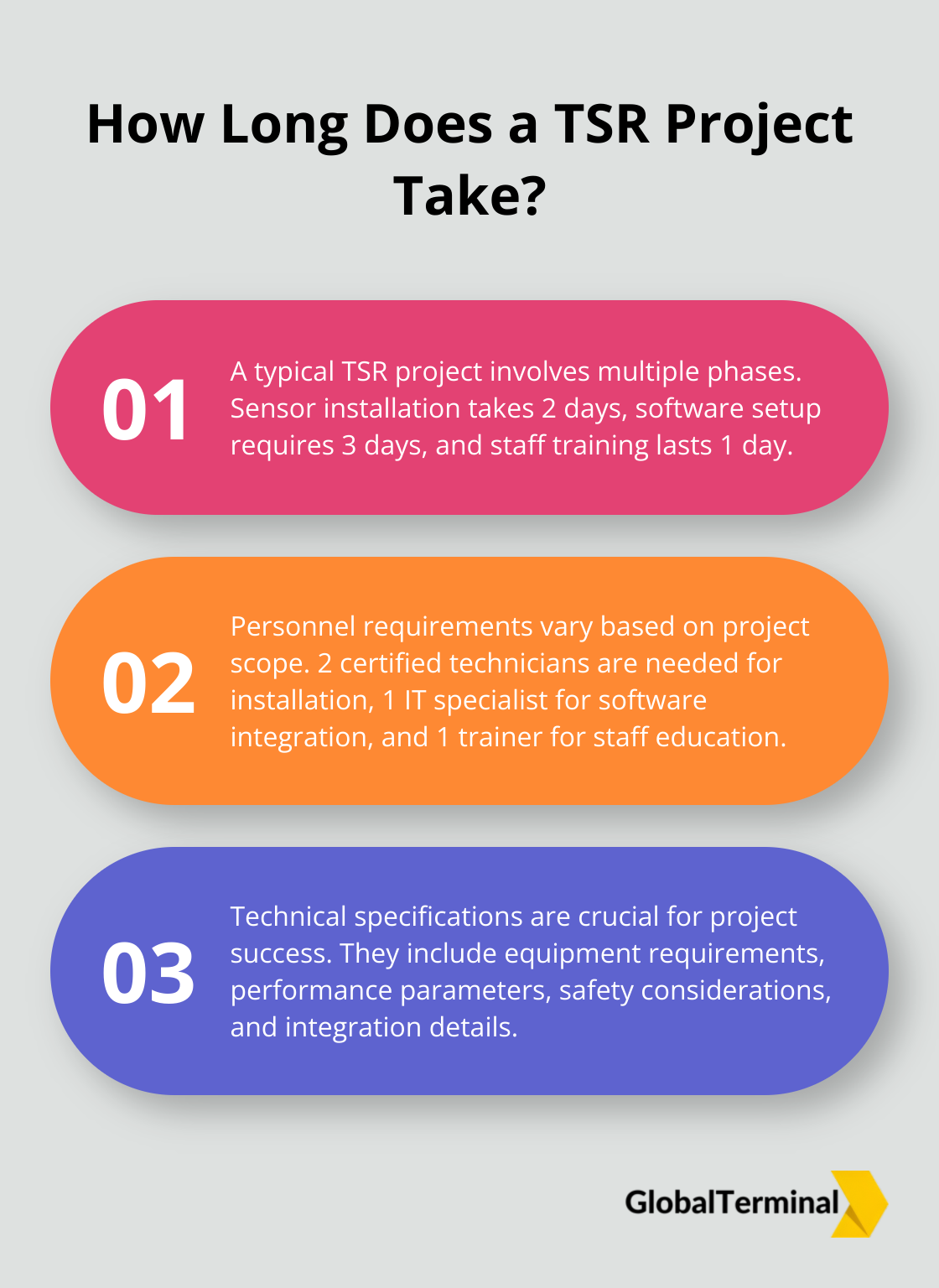
As we move forward, we’ll explore how to effectively implement and track these TSR documents, ensuring that the carefully laid plans translate into successful project outcomes.
Turning TSR Documents into Action
The TSR should be written in a clear, concise manner using language that is directed at the facility-operating organization. This approach ensures that the document can be easily understood and implemented by those responsible for its execution.
Assigning Clear Responsibilities
The first step in TSR implementation requires the assignment of specific responsibilities. Each task outlined in the TSR should have a designated owner. For instance, in a tank monitoring system upgrade, the project manager should assign the hardware installation to the maintenance team, software integration to the IT department, and staff training to the operations manager. This clear delineation of roles minimizes confusion and enhances accountability.
Leveraging Project Management Tools
Effective tracking of TSR implementation demands robust project management tools. By implementing effective project management software and techniques, organizations can streamline their processes, enhance collaboration, and track progress. For example, when implementing a new automated inventory system across multiple storage facilities, a Gantt chart can visually represent the project timeline (highlighting critical paths and potential bottlenecks).
Maintaining Stakeholder Communication
Regular communication with stakeholders is vital throughout the TSR implementation process. We recommend the scheduling of weekly progress meetings and the sending of daily email updates. This approach keeps all parties informed and allows for quick problem-solving. For instance, during a safety protocol upgrade across multiple facilities, daily briefings help address potential operational impacts proactively (minimizing disruptions to clients’ supply chains).
Adapting to Changes
TSR documents are not set in stone. As projects progress, unforeseen challenges or opportunities may arise, necessitating changes to the original plan. The establishment of a formal change request process helps manage these adjustments. This process should include an assessment of the impact on timeline, budget, and project scope. For example, if a new, more efficient sensor becomes available during a tank monitoring upgrade, the change request process would evaluate the benefits against potential delays and cost increases.
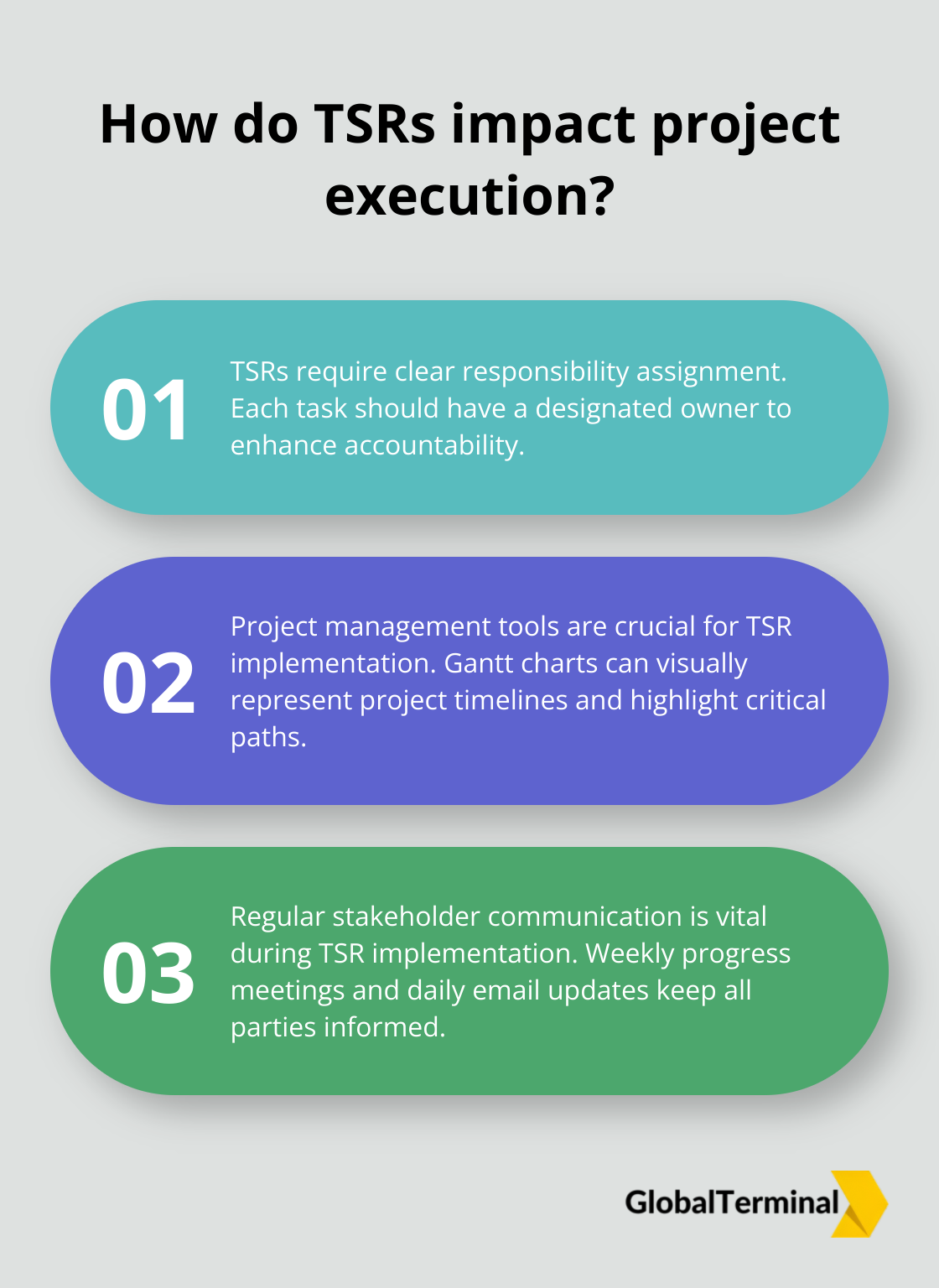
Final Thoughts
Technical Service Request (TSR) documents play a vital role in the fuel storage and logistics industry. They act as comprehensive roadmaps for project execution, enhance communication, and streamline operations. At Global Terminal Netherlands B.V., we recognize the importance of TSRs in maintaining high service standards across our network of strategic ports.
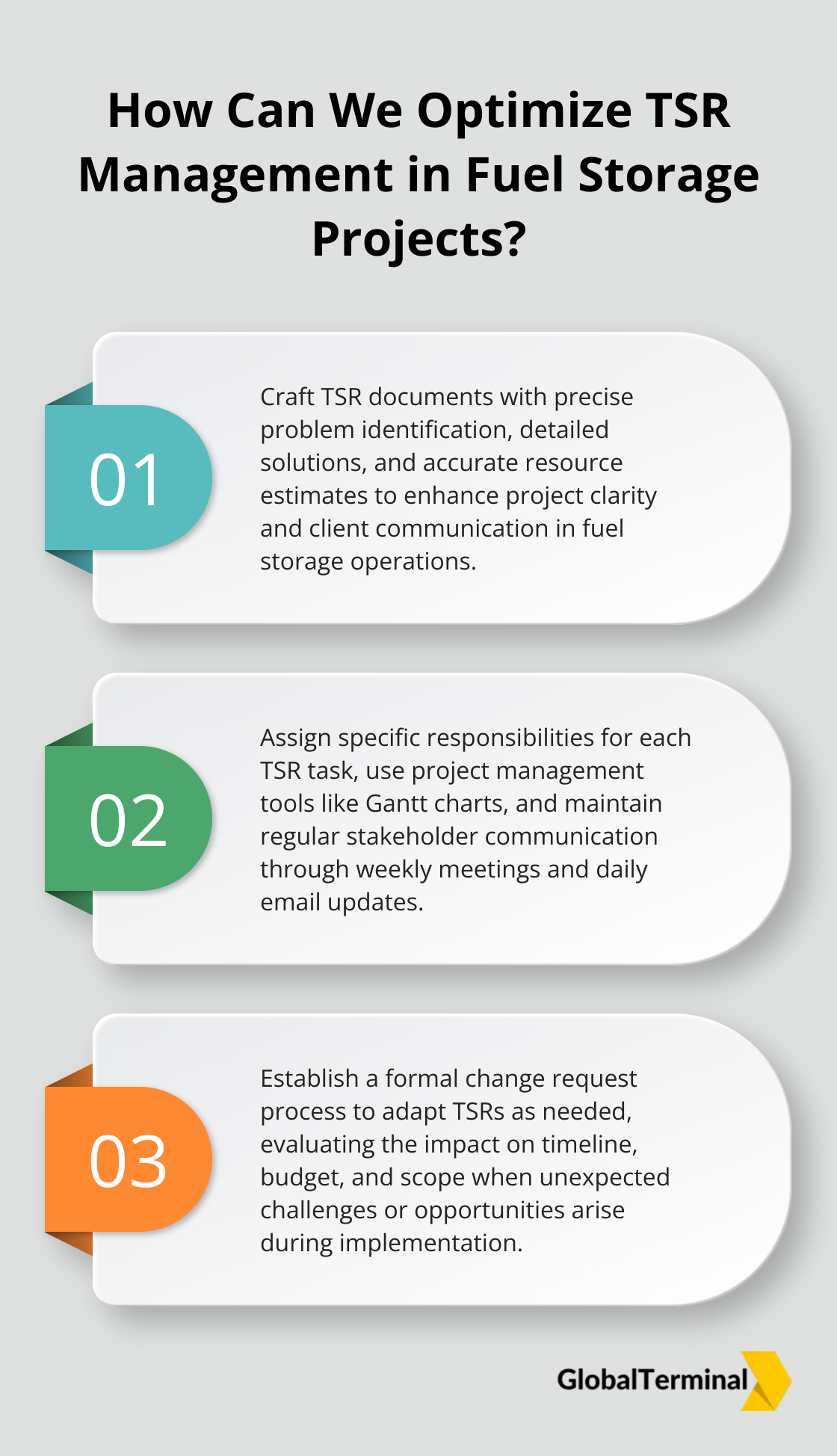
TSRs impact project success by minimizing misunderstandings, reducing errors, and improving operational efficiency. In fuel tank storage receipt processes, TSRs ensure meticulous planning and execution of all aspects, from safety protocols to inventory management. They help maintain reliability, safety, and cost-effectiveness in fuel storage and logistics operations.
The mastery of TSR documentation proves essential for competitiveness in an industry where precision and efficiency are paramount. It allows companies to meet the evolving needs of clients in the fuel storage and logistics sector. Global Terminal Netherlands B.V. continues to optimize operations and provide superior customer service through effective TSR implementation.





Leave a Reply